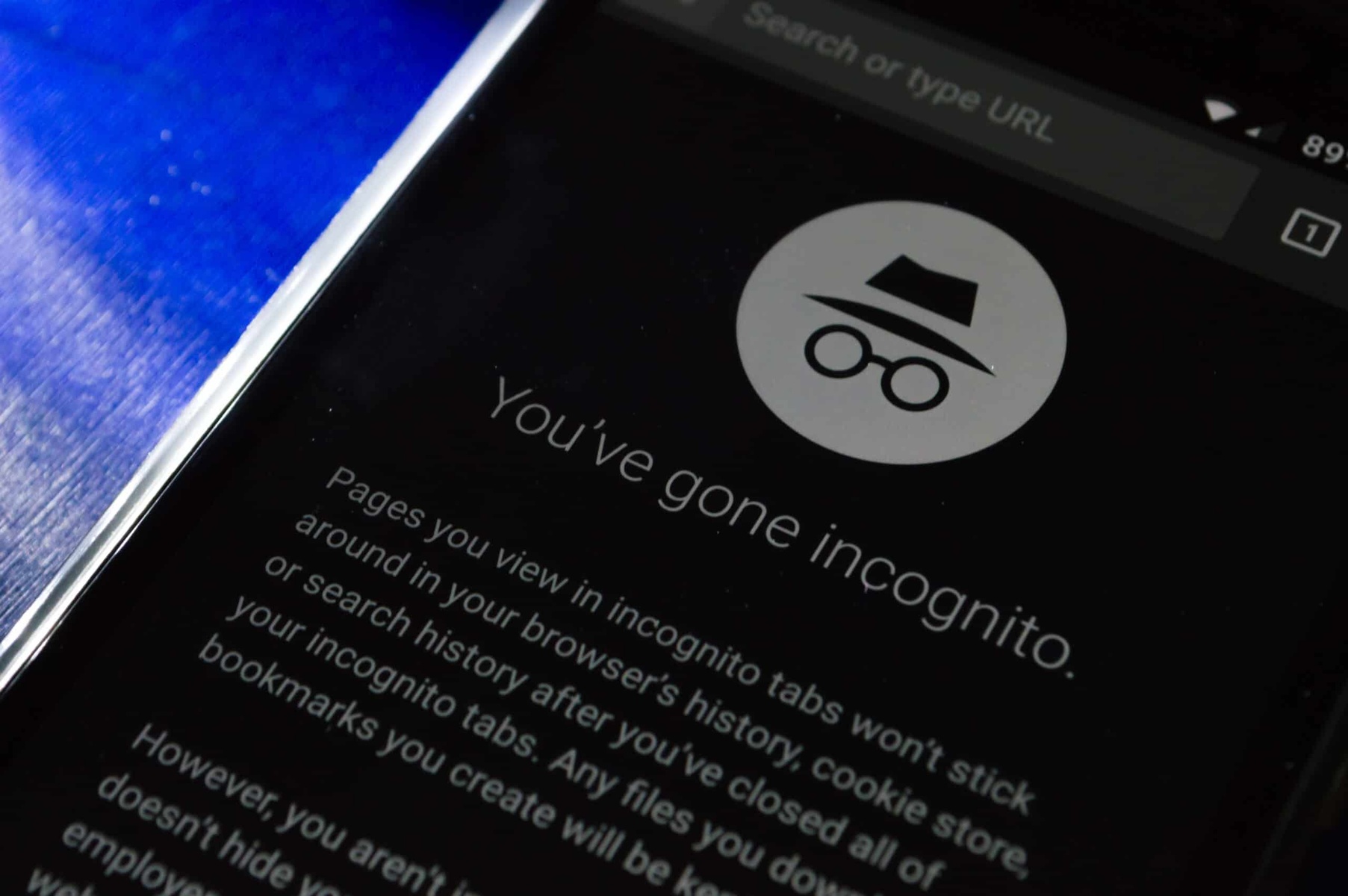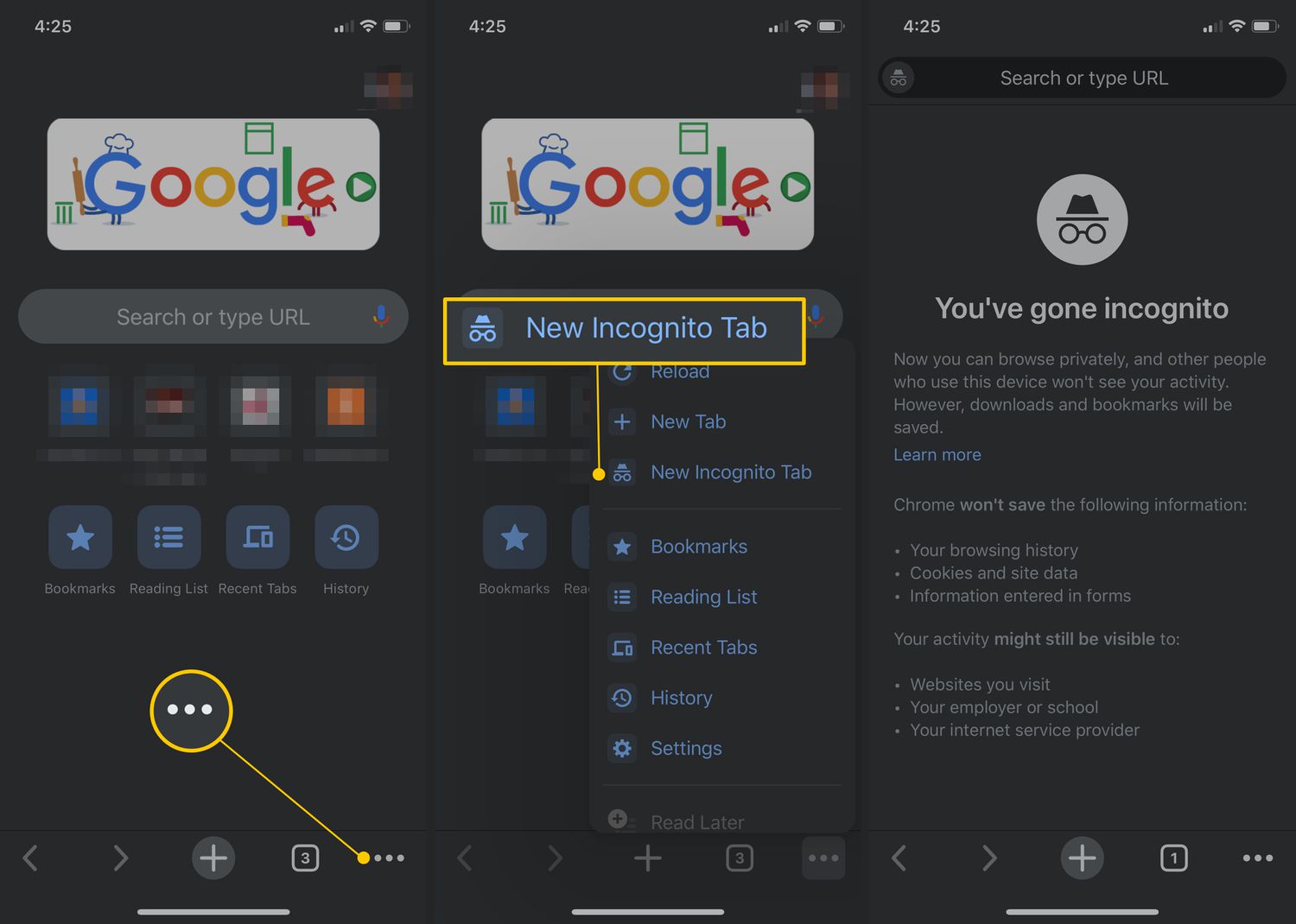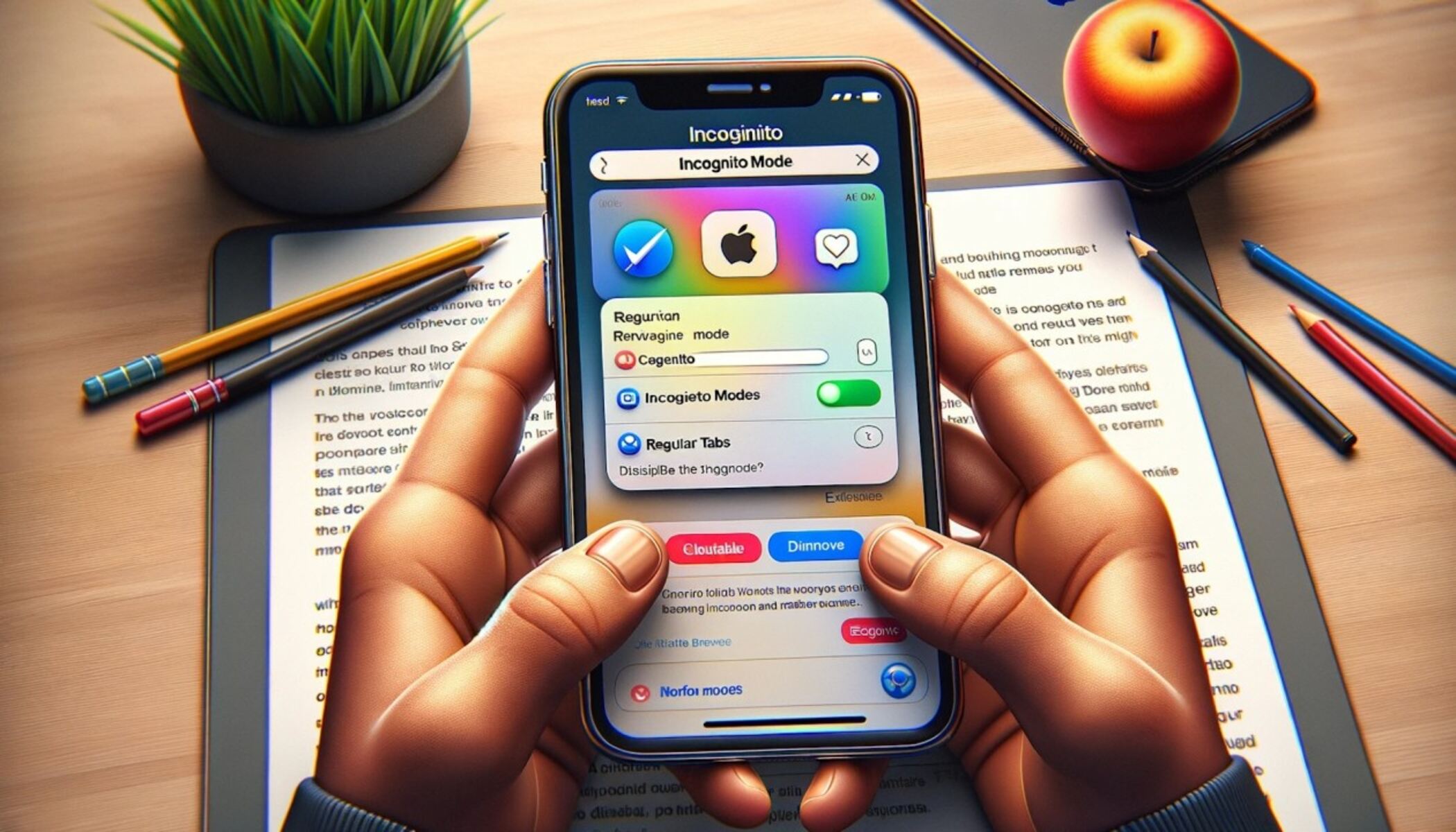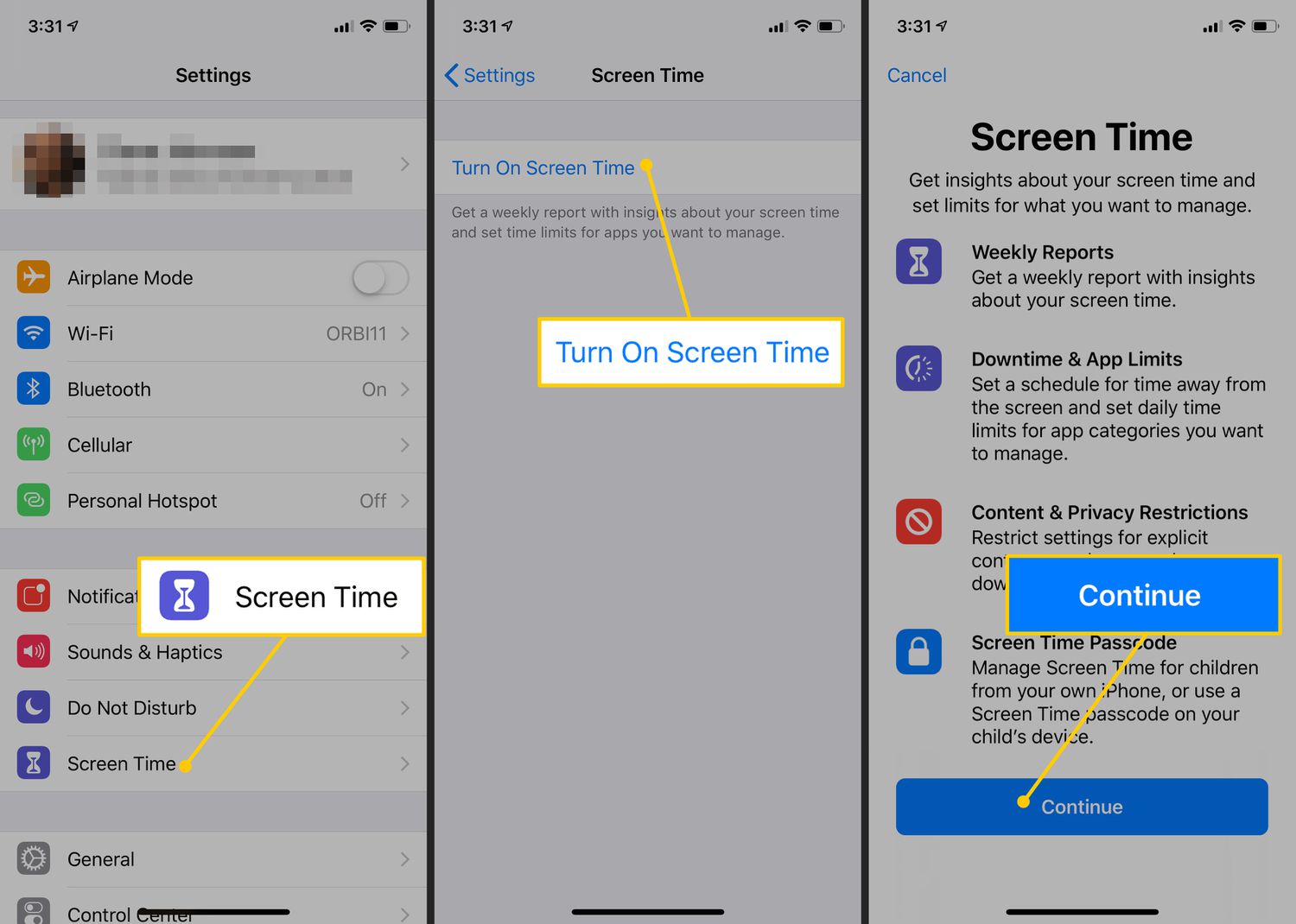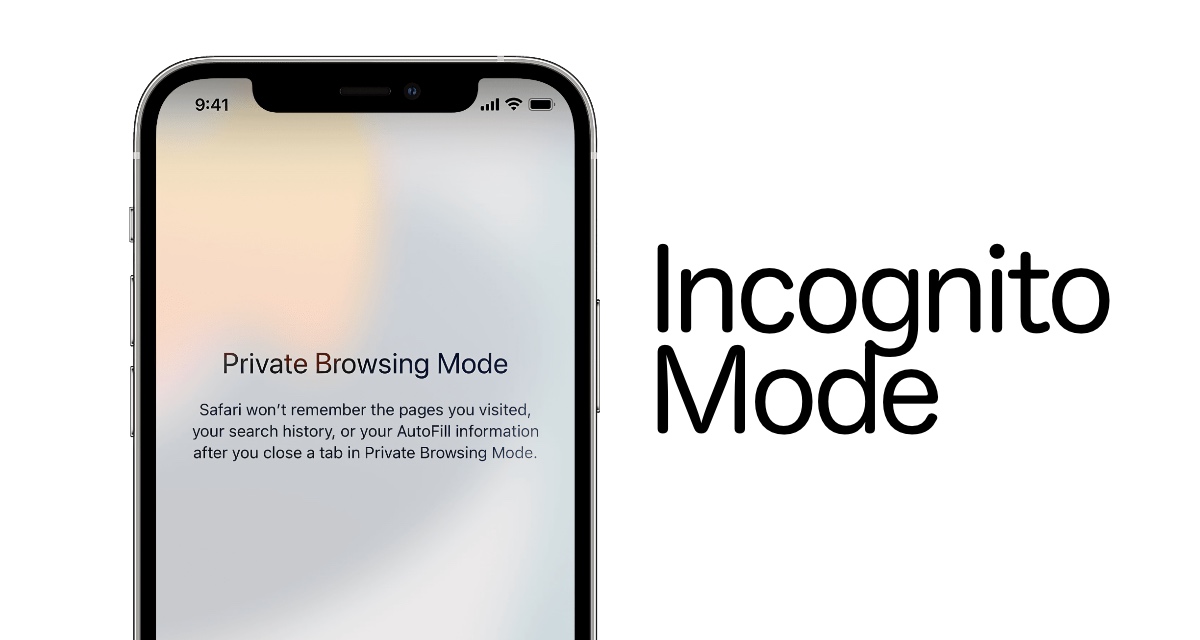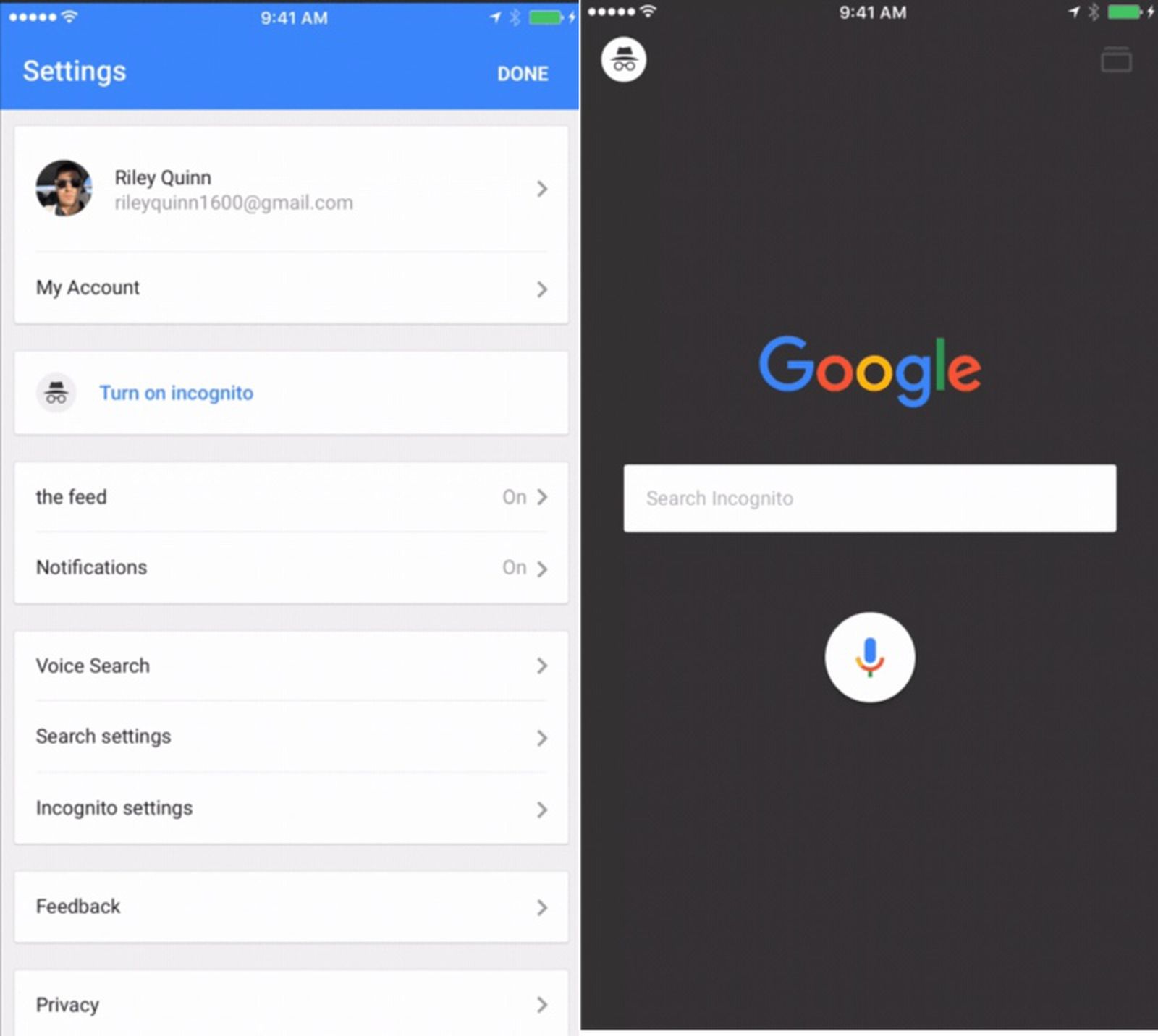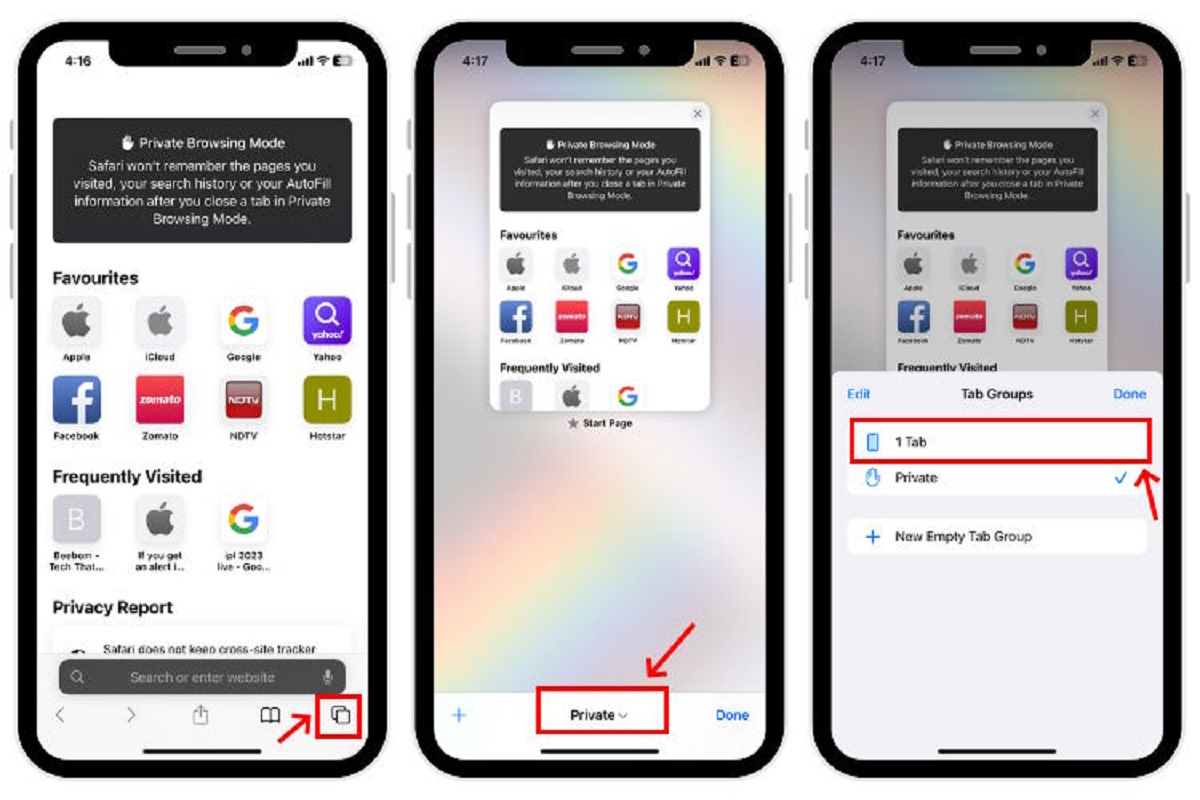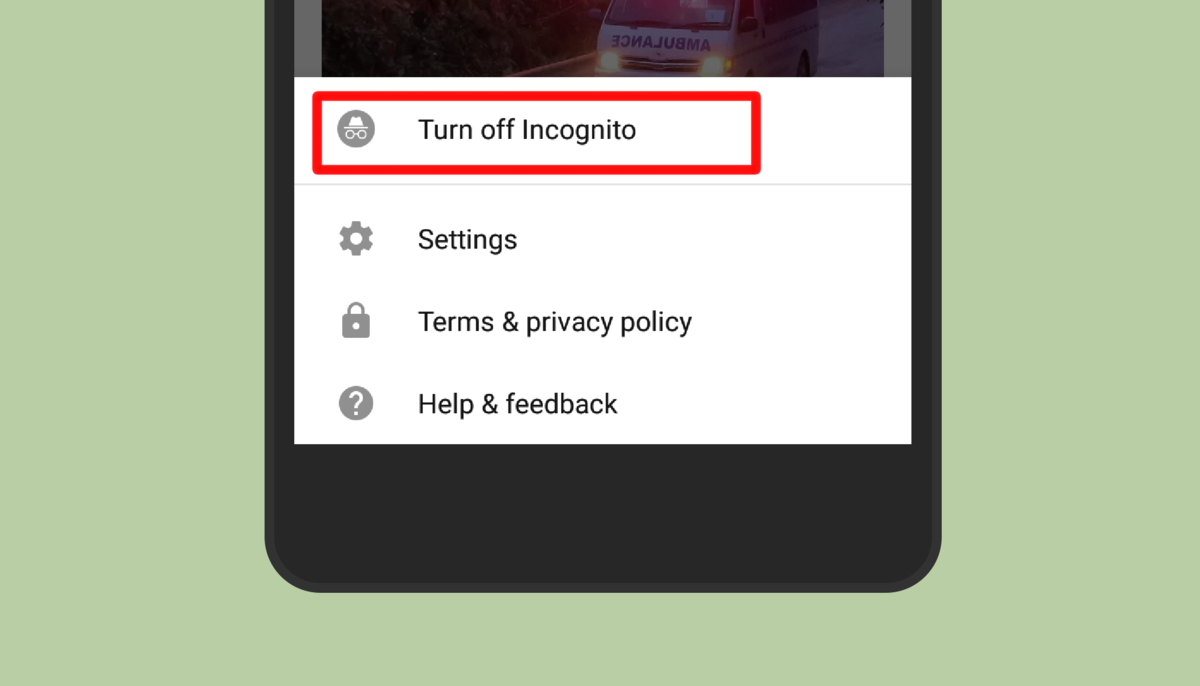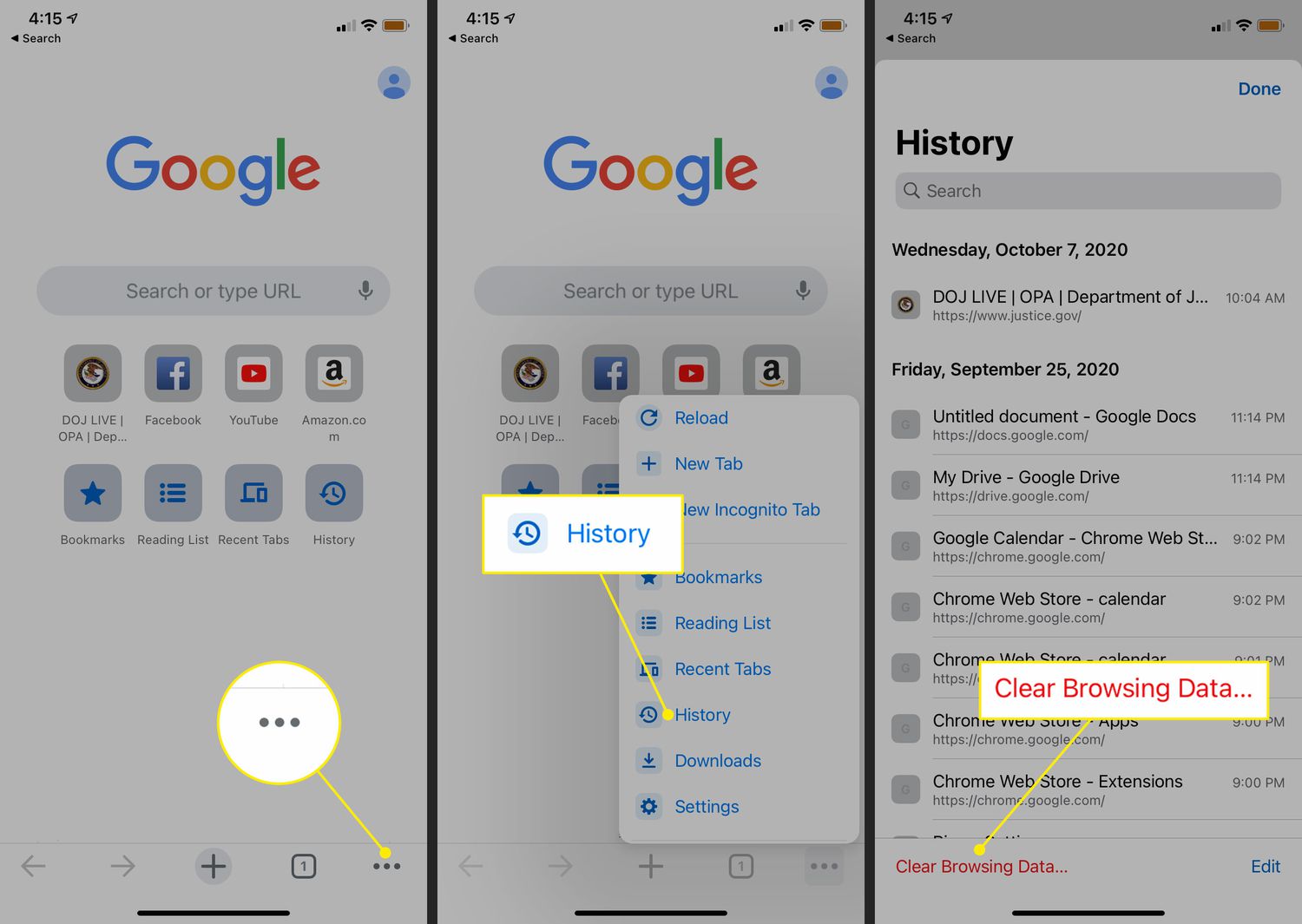Introduction
Incognito mode, also known as private browsing, is a feature available in most web browsers that allows users to browse the internet without the browser storing their history, cookies, or other browsing data. This can be particularly useful when you want to keep your browsing activity private or if you're using a shared device and don't want your information to be saved.
While this feature provides a layer of privacy and convenience, there are instances where you may want to disable it, especially on an iPhone using the Chrome browser. Perhaps you want to monitor the browsing activities of a family member, restrict access to certain websites, or ensure that browsing history is being recorded for accountability purposes. Whatever the reason, knowing how to turn off incognito mode in Chrome on an iPhone can be valuable.
In this article, we will explore three methods to disable incognito mode on Chrome for iPhone. Each method offers a unique approach, catering to different preferences and needs. Whether you prefer using built-in iPhone features, leveraging restrictions, or opting for a third-party app, you'll find a solution that suits your specific requirements.
By understanding these methods, you can gain greater control over the browsing experience on your iPhone, ensuring that you can monitor, manage, and customize the browsing behavior of yourself or others. Let's dive into the step-by-step instructions for each method and empower you to take charge of the incognito mode settings on Chrome for iPhone.
Method 1: Using Screen Time
If you want to disable incognito mode on Chrome for iPhone, utilizing the Screen Time feature can be an effective approach. Screen Time is a built-in feature in iOS that allows users to monitor and manage their device usage, set content and privacy restrictions, and establish downtime schedules. By leveraging this feature, you can restrict the use of private browsing in Chrome, providing a comprehensive solution for managing browsing activities on your iPhone.
To begin, follow these step-by-step instructions to disable incognito mode using Screen Time:
-
Access Screen Time: Start by accessing the Settings app on your iPhone and tapping on "Screen Time." If you haven't set up Screen Time before, you may need to enable it and create a passcode to proceed.
-
Navigate to Content & Privacy Restrictions: Within the Screen Time settings, tap on "Content & Privacy Restrictions." If prompted, enter your Screen Time passcode to access this section.
-
Enable Restrictions: Toggle the switch next to "Content & Privacy Restrictions" to enable this feature. You will then be prompted to enter a passcode for these restrictions. This passcode ensures that only authorized users can make changes to the content and privacy settings.
-
Access Allowed Apps: Scroll down to find the "Allowed Apps" section within Content & Privacy Restrictions. Tap on it to view the list of allowed apps on your device.
-
Disable Private Browsing: Locate Google Chrome in the list of allowed apps and ensure that the toggle next to it is turned off. This action effectively disables the incognito mode feature within the Chrome browser, preventing users from accessing private browsing.
By following these steps, you can effectively disable incognito mode in Chrome on your iPhone using the Screen Time feature. This method provides a convenient and integrated approach to managing browsing restrictions, ensuring that private browsing is not accessible through the Chrome browser. Whether you're implementing this for yourself or for others, Screen Time offers a robust solution for controlling browsing behavior on iOS devices.
With the incognito mode disabled, you can have greater visibility and oversight of the browsing activities on your iPhone, promoting a more secure and accountable browsing experience. This method empowers you to customize browsing restrictions according to your preferences, enhancing the overall control and management of browsing behavior on Chrome for iPhone.
Method 2: Using Restrictions
Utilizing the built-in Restrictions feature on your iPhone provides another effective method to disable incognito mode in Chrome. Restrictions, also known as parental controls, allow you to set specific limitations on various aspects of your device, including app usage, content access, and privacy settings. By leveraging this feature, you can implement comprehensive restrictions that prevent the use of private browsing in the Chrome browser, ensuring a more controlled and monitored browsing experience.
To initiate the process of disabling incognito mode using Restrictions, follow these step-by-step instructions:
-
Access Settings: Begin by opening the Settings app on your iPhone. Scroll down and tap on "Screen Time" to proceed.
-
Enter Screen Time Passcode: If you have previously set up Screen Time, you may need to enter your Screen Time passcode to access the settings. If you haven't set up Screen Time before, you will be prompted to do so.
-
Navigate to Content & Privacy Restrictions: Within the Screen Time settings, tap on "Content & Privacy Restrictions." If prompted, enter your Screen Time passcode to proceed to the next step.
-
Enable Restrictions: Toggle the switch next to "Content & Privacy Restrictions" to enable this feature. You will be prompted to create a passcode specifically for these restrictions, ensuring that only authorized users can modify the content and privacy settings.
-
Access Allowed Apps: Scroll down to find the "Allowed Apps" section within Content & Privacy Restrictions. Tap on it to view the list of allowed apps on your device.
-
Disable Private Browsing: Locate Google Chrome in the list of allowed apps and ensure that the toggle next to it is turned off. By doing so, you effectively disable the incognito mode feature within the Chrome browser, preventing users from accessing private browsing.
By following these steps, you can effectively utilize the Restrictions feature to disable incognito mode in Chrome on your iPhone. This method offers a seamless and integrated approach to implementing browsing restrictions, ensuring that private browsing is not accessible through the Chrome browser. Whether you are setting up these restrictions for yourself or for others, the Restrictions feature provides a robust solution for managing and customizing browsing behavior on iOS devices.
With incognito mode disabled, you gain greater oversight and control over the browsing activities on your iPhone, fostering a more secure and accountable browsing experience. This method empowers you to tailor browsing restrictions according to your preferences, enhancing the overall management and control of browsing behavior on Chrome for iPhone.
Method 3: Using a Third-Party App
When it comes to disabling incognito mode in Chrome on an iPhone, leveraging a third-party app can offer a versatile and customizable approach. While iOS provides built-in features for managing browsing restrictions, utilizing a third-party app can provide additional functionalities and flexibility, catering to specific preferences and requirements. By integrating a dedicated app for controlling browsing behavior, you can enhance the overall management and oversight of incognito mode on Chrome for iPhone.
To initiate the process of using a third-party app to disable incognito mode, follow these step-by-step instructions:
-
App Selection: Begin by exploring the App Store on your iPhone to identify and select a suitable third-party app that specializes in managing browsing restrictions and privacy settings. Look for apps with positive reviews and a robust feature set that aligns with your desired browsing management capabilities.
-
Installation and Setup: Download and install the chosen third-party app onto your iPhone. Once installed, follow the app's onboarding process to set up the necessary permissions and configurations. This may involve granting the app access to relevant device settings and features to enable comprehensive browsing management.
-
Browsing Restrictions: Within the third-party app, navigate to the section or feature that pertains to browsing restrictions or private browsing controls. Depending on the app's interface and functionality, you may find options to disable incognito mode specifically for the Chrome browser or implement broader browsing restrictions across multiple apps.
-
Customization and Monitoring: Explore the customization options offered by the third-party app to tailor the browsing restrictions according to your preferences. This may include setting time-based restrictions, creating whitelists or blacklists of websites, and monitoring browsing activities to ensure compliance with the established restrictions.
-
Enforcement and Accountability: Once the browsing restrictions are configured within the third-party app, ensure that they are actively enforced. Regularly review the app's monitoring features to track browsing activities and address any attempts to circumvent the established restrictions, promoting greater accountability and adherence to the browsing guidelines.
By utilizing a third-party app to disable incognito mode in Chrome on your iPhone, you can access a diverse range of features and customization options to effectively manage browsing behavior. These apps often offer enhanced monitoring capabilities, detailed reporting, and advanced restriction settings, empowering you to maintain a secure and controlled browsing environment on your iOS device.
With incognito mode disabled through the use of a third-party app, you can establish comprehensive browsing restrictions tailored to your specific needs, ensuring a more accountable and managed browsing experience. This method provides a flexible and adaptable approach to controlling incognito mode on Chrome for iPhone, offering an alternative solution for users seeking advanced browsing management capabilities beyond the built-in iOS features.
Conclusion
In conclusion, the ability to disable incognito mode in Chrome on an iPhone is a valuable capability that empowers users to manage and customize their browsing experience according to their specific needs and preferences. Throughout this article, we have explored three distinct methods for turning off incognito mode, each offering a unique approach to achieving greater control over browsing behavior on iOS devices.
By leveraging the Screen Time feature, users can seamlessly implement browsing restrictions and disable incognito mode within the Chrome browser. This built-in iOS functionality provides a convenient and integrated solution for managing browsing activities, ensuring that private browsing is not accessible through the Chrome app. Additionally, the use of Restrictions, also known as parental controls, offers a similar method for disabling incognito mode, providing users with the flexibility to customize browsing restrictions and enhance oversight of browsing activities.
Furthermore, the utilization of third-party apps presents an alternative approach to disabling incognito mode, offering advanced features and customization options for comprehensive browsing management. By integrating dedicated apps designed to control browsing behavior, users can access enhanced monitoring capabilities, detailed reporting, and advanced restriction settings, fostering a more secure and accountable browsing environment on their iPhones.
Regardless of the chosen method, the ability to disable incognito mode in Chrome on an iPhone empowers users to tailor their browsing experience, whether for personal accountability, parental control, or device sharing scenarios. By implementing these methods, users can gain greater visibility and oversight of browsing activities, promoting a more secure and managed browsing experience on their iOS devices.
Ultimately, the diverse range of methods available for turning off incognito mode in Chrome on an iPhone reflects the importance of providing users with the flexibility and control to customize their browsing behavior. Whether through built-in iOS features or third-party solutions, users can effectively manage and disable incognito mode, ensuring a more accountable and secure browsing experience tailored to their individual preferences and requirements.







